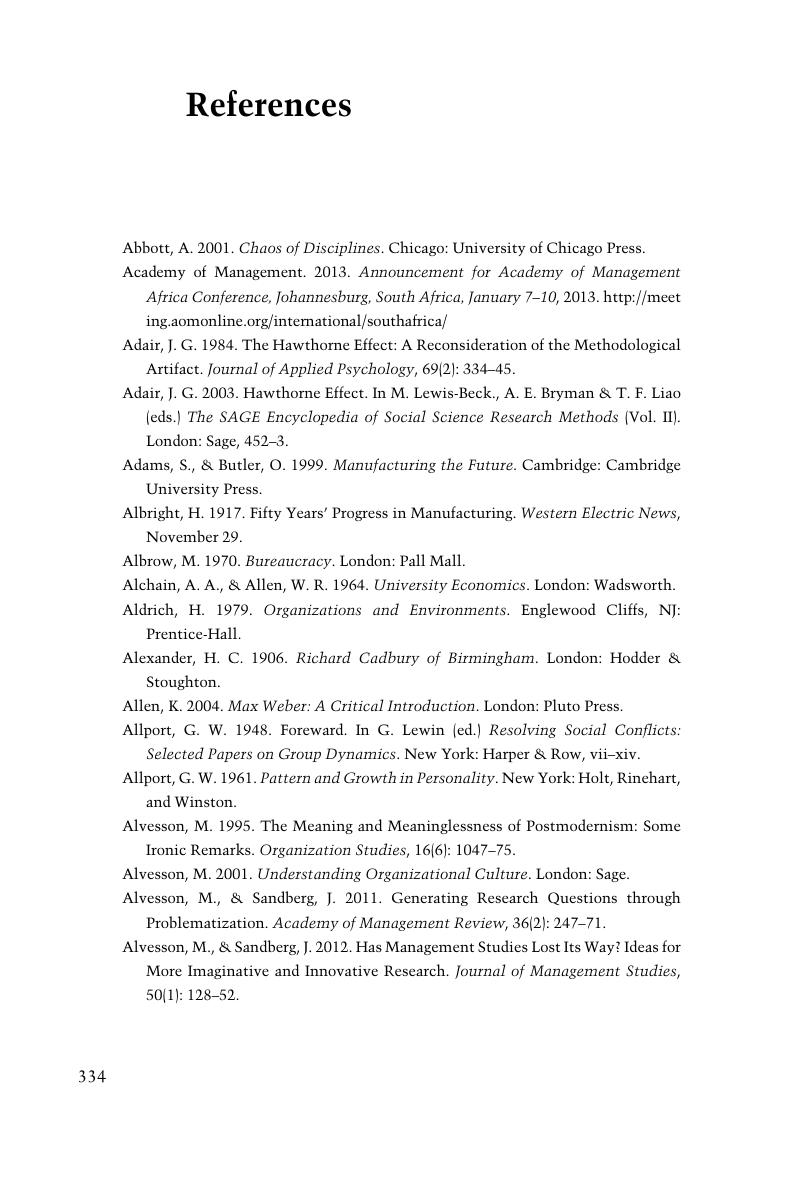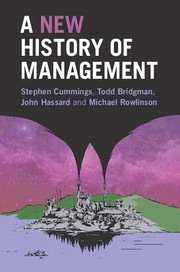Book contents
- A New History of Management
- A New History of Management
- Copyright page
- Contents
- Figures
- Tables
- Preface and Acknowledgements
- 1 Rethinking the Map of Management History
- 2 Management’s Formation: The Importance of the Liberal Context
- 3 To What End? The Nature of Management’s Classical Approach
- 4 The Birth of Organization Science: Or What We Could Learn from Max Weber
- 5 The Institution of the Business School
- 6 The Discovery of the Human Worker
- 7 Textbook Distortions: How Management Textbooks Process History and Limit Future Thinking
- 8 The Invention of Corporate Culture
- 9 Remaking Management History: New Foundations for the Future
- Conclusion
- References
- Index
- References
References
Published online by Cambridge University Press: 21 September 2017
- A New History of Management
- A New History of Management
- Copyright page
- Contents
- Figures
- Tables
- Preface and Acknowledgements
- 1 Rethinking the Map of Management History
- 2 Management’s Formation: The Importance of the Liberal Context
- 3 To What End? The Nature of Management’s Classical Approach
- 4 The Birth of Organization Science: Or What We Could Learn from Max Weber
- 5 The Institution of the Business School
- 6 The Discovery of the Human Worker
- 7 Textbook Distortions: How Management Textbooks Process History and Limit Future Thinking
- 8 The Invention of Corporate Culture
- 9 Remaking Management History: New Foundations for the Future
- Conclusion
- References
- Index
- References
Summary

- Type
- Chapter
- Information
- A New History of Management , pp. 331 - 333Publisher: Cambridge University PressPrint publication year: 2017



